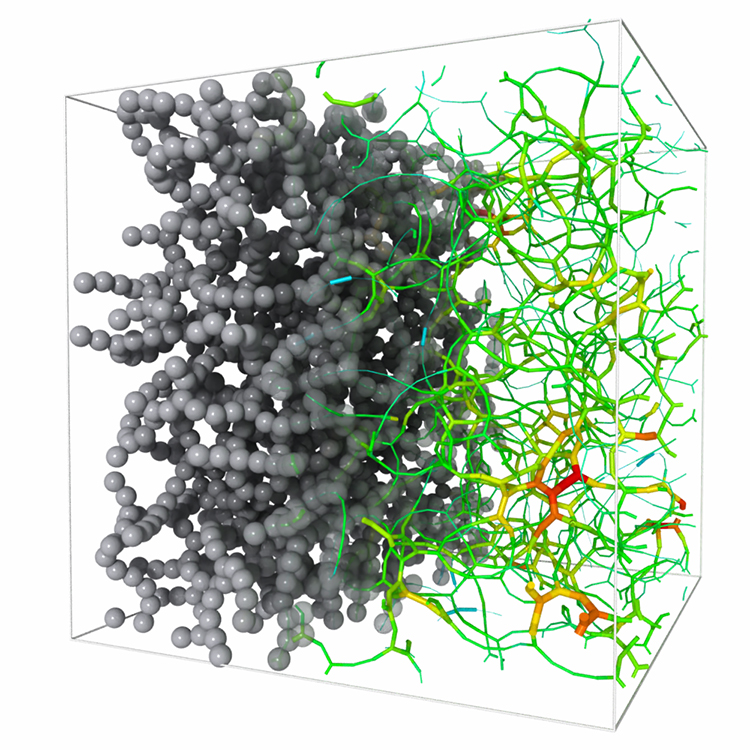Publication of the Physics Laboratory in the journal Nature Physics on May 4, 2023. Communication of the CNRS-INSIS on May 9, 2023.
The more solids a gel contains, the more solid it is. However, this principle is not sufficient to explain all the mechanical behaviors observed in reality. An international team has discovered that the macroscopic mechanical properties of gels are due to heterogeneities in their structure, inherited from the singular microstructure that the material adopts at the very moment of its gelation. Published in Nature Physics, this work establishes for the first time a quantitative link between microstructure and macroscopic mechanical properties of particulate gels.
Abstract
Soft particulate gels are composed of a small amount of particulate matter dispersed in a continuous fluid phase. The solid components assemble to form a porous matrix, providing rigidity and control of the mechanical response, despite being the minority constituent. The rheological response and gel elasticity are direct functions of the particle volume fraction. However, the diverse range of different functional dependencies reported experimentally has challenged efforts to identify general scaling laws. Here we reveal a hidden hierarchical organization of fractal elements that controls the viscoelastic spectrum, and which is associated with the spatial heterogeneity of the solid matrix topology. The fractal elements form the foundations of a viscoelastic master curve, constructed using large-scale three-dimensional (3D) microscopic simulations of model gels, which can be described by a recursive rheological ladder model over a range of particle volume fractions and gelation rates. The hierarchy of the fractal elements provides the missing general framework required to predict the gel elasticity and the linear viscoelastic response of these complex materials.Soft particulate gels are composed of a small amount of particulate matter dispersed in a continuous fluid phase. The solid components assemble to form a porous matrix, providing rigidity and control of the mechanical response, despite being the minority constituent. The rheological response and gel elasticity are direct functions of the particle volume fraction. However, the diverse range of different functional dependencies reported experimentally has challenged efforts to identify general scaling laws. Here we reveal a hidden hierarchical organization of fractal elements that controls the viscoelastic spectrum, and which is associated with the spatial heterogeneity of the solid matrix topology. The fractal elements form the foundations of a viscoelastic master curve, constructed using large-scale three-dimensional (3D) microscopic simulations of model gels, which can be described by a recursive rheological ladder model over a range of particle volume fractions and gelation rates. The hierarchy of the fractal elements provides the missing general framework required to predict the gel elasticity and the linear viscoelastic response of these complex materials.

Credits: Medhi Bouzid. Illustration generated with Ovito.
Reference: The hidden hierarchical nature of soft particulate gels. Minaspi Bantawa, Bavand Keshavarz, Michela Geri, Mehdi Bouzid, Thibaut Divoux, Gareth H. McKinley and Emanuela Del Gado. Nature Physics, May 4, 2023.
DOI :10.1038/s41567-023-01988-7
Available on the open archive ArXiv, DOI: 10.48550/arXiv.2211.03693






